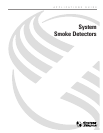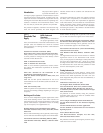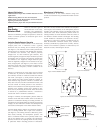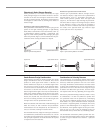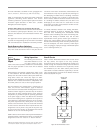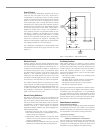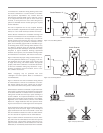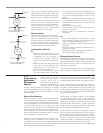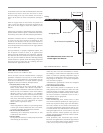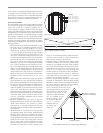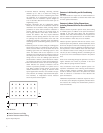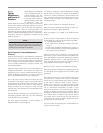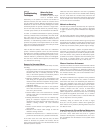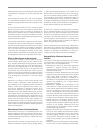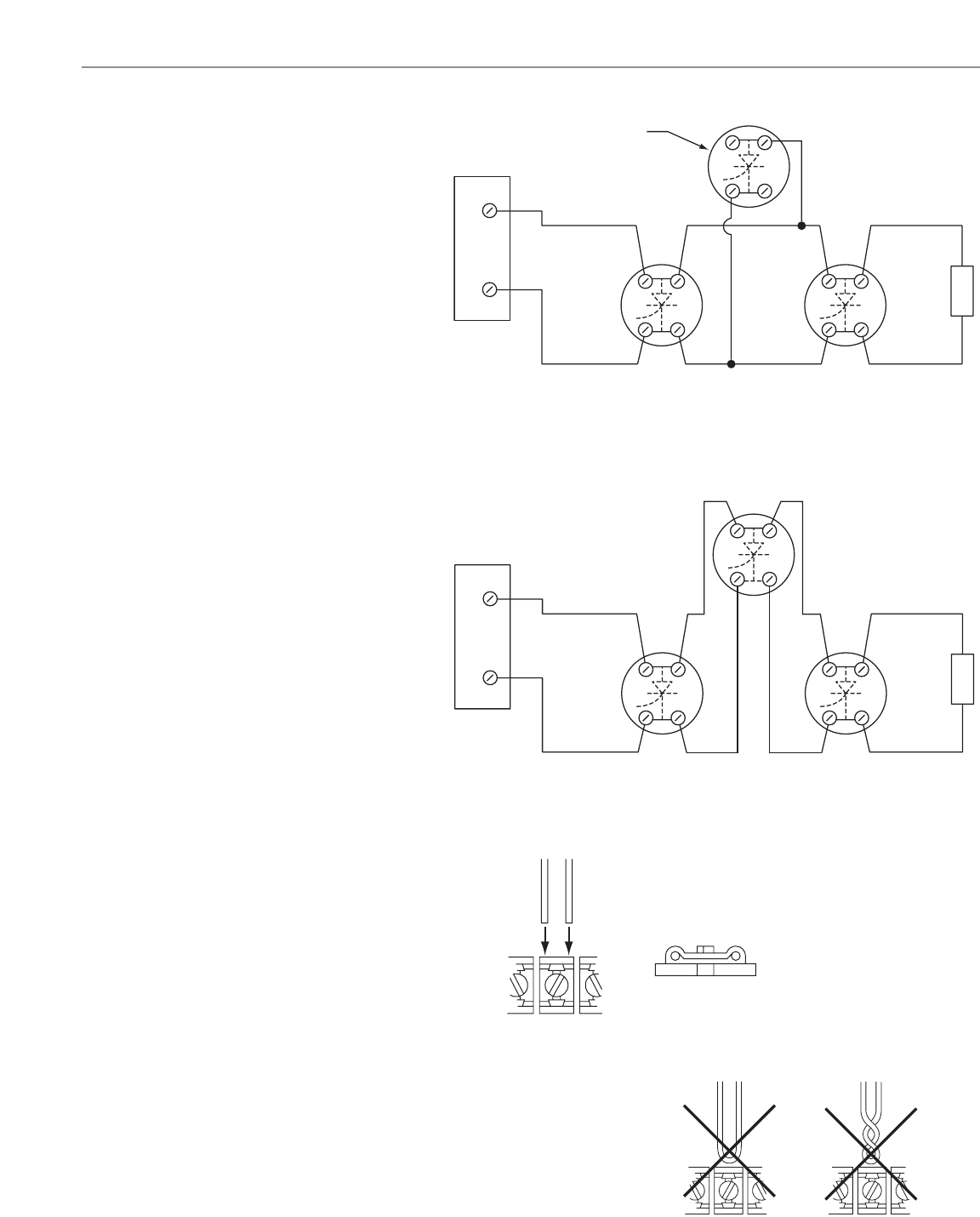
SYSTEM SENSOR
7
A manufacturer’s installation wiring drawing routes wires
and shows connections in a certain manner to accommo-
date supervision requirements. Any variance from the
manufacturer’s drawings might cause a portion of a circuit
to be unsupervised and, if an open or short circuit fault
occurred, it could prevent the circuit from being able to
perform its intended function without giving the required
trouble indication.
The rules of supervision are not very complex. However,
unless an installer is experienced in fire alarm system instal-
lations, he or she would not likely be familiar with them.
Smoke detector manufacturer’s installation drawings will
show how their detectors are to be connected into a system.
However, a manufacturer’s drawings may not show how
devices located on the same floor, but served by a different
riser (vertical wiring run), should be connected. The dia-
grams on the following page should be considered as typi-
cal initiating device circuits utilizing smoke detectors. They
are offered to illustrate proper and improper installation
wiring and termination techniques. Since there are always
exceptions to typical installation drawings, experienced
installers use the primary rule of installation wiring: Follow
the manufacturer’s instructions, and meet the local codes.
Figure 12 illustrates improper wiring of smoke detector “A”.
This wiring method is referred to as “T-tapping.” This com-
mon installation error is often made in riser wiring as well
as single floor wiring. The smoke detector may operate
properly under alarm conditions. If it becomes disconnect-
ed from the installation wiring loop beyond the “T-tap”,
however, the detector would not function, and no “trou-
ble” condition would occur.
NOTE: “T-tapping” may be permitted with some
“intelligent” fire alarm systems. Refer to manufacturer’s
recommendations.
Figure 13 illustrates the correct installation wiring method
for smoke detectors. None of the connections can be bro-
ken without opening the circuit, causing loss of supervi-
sion, and the fire alarm control panel to indicate trouble.
Smoke detectors should be connected to supervised instal-
lation wiring in a manner that ensures electrical supervision
of the device. Removal of a detector from its associated ini-
tiating circuit should cause the loop to open, resulting in a
trouble condition. The required termination at the smoke
detector may involve either screw terminals or wire pigtails.
Regardless of the method utilized, removal of the smoke
detector or a single installation wire must open the initiat-
ing circuit and result in a trouble signal at the control panel.
Screw termination of either side of the initiating circuit may
require only one or two screws. Figure 14 is an example of
proper termination when one screw terminal is used. Note
that the installation conductor has been cut before termina-
tion. This assures full supervision of the smoke detector.
Figure 15 details common connection errors. In both exam-
ples, removal of the smoke detector wire does not open the
initiating circuit. The fire alarm control panel will not rec-
ognize a trouble condition, and the detector that has been
deliberately or inadvertently disconnected will be disabled.
Smoke Detector “A”
Smoke Detector Smoke Detector
Smoke Detector
Smoke Detector
Smoke Detector
Figure 12: Incorrect Wiring Method
Figure 13: Correct Wiring Method
Figure 14: Proper Termination
Figure 15: Improper Termination



